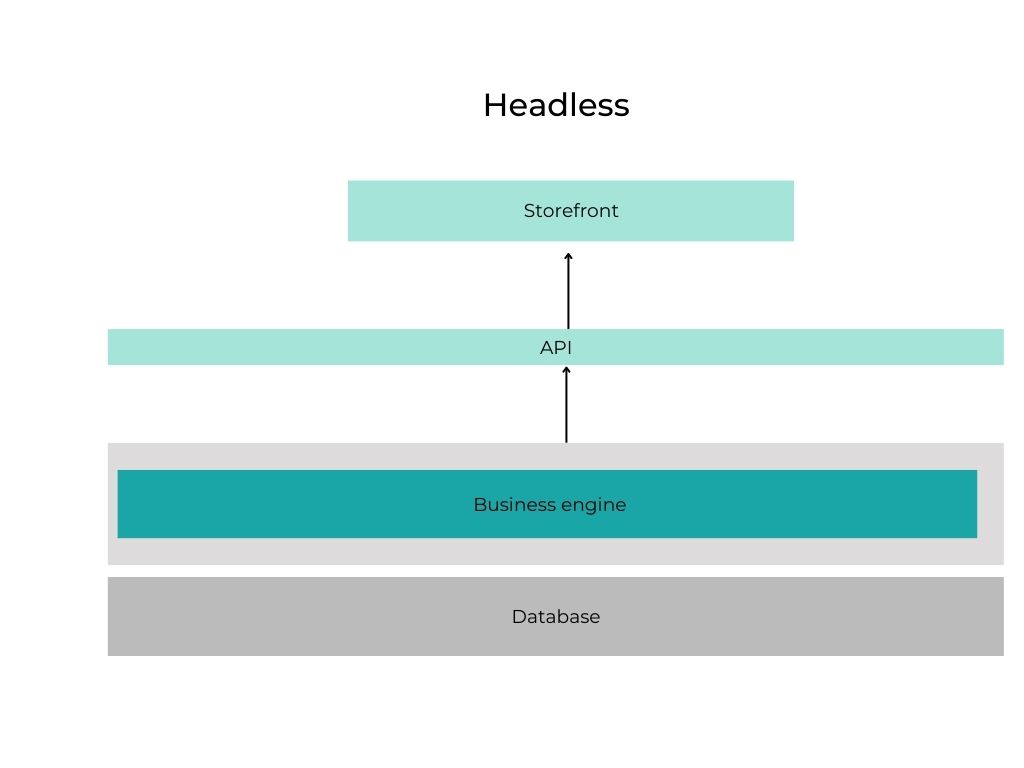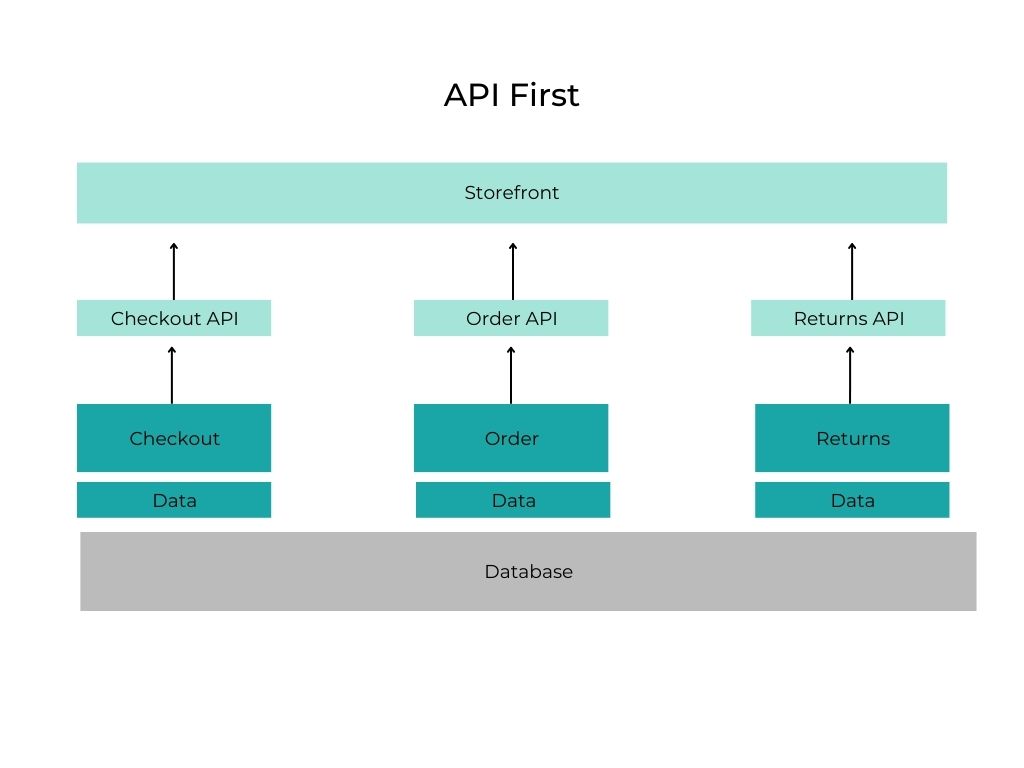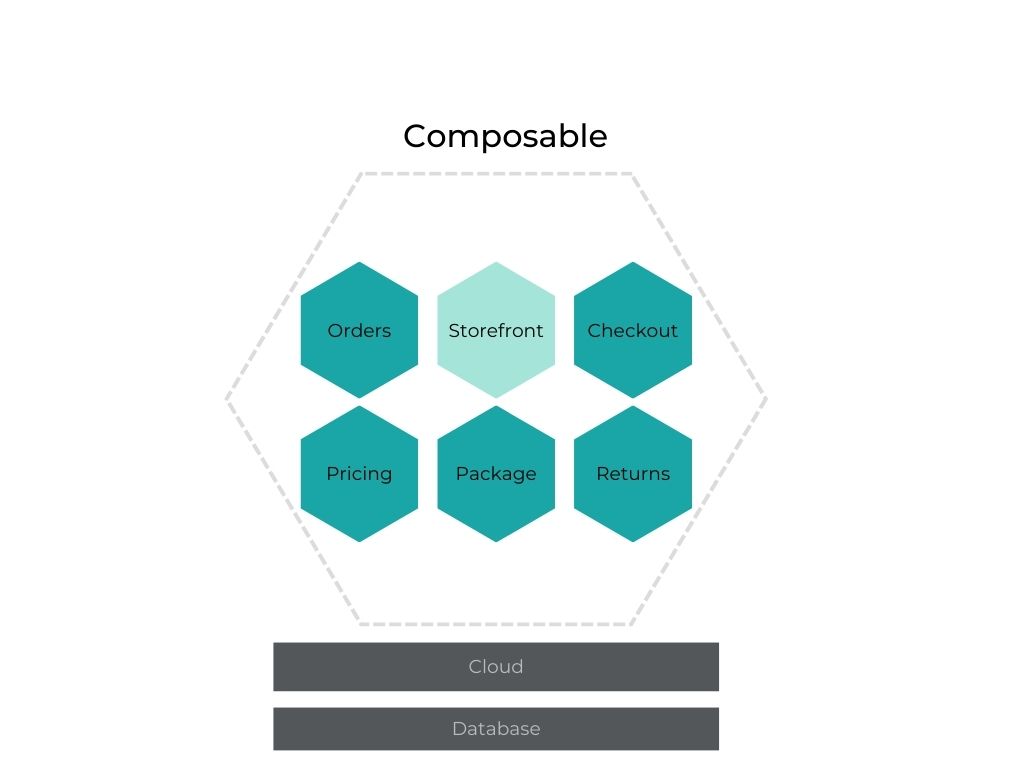Brands and retailers with DTC channels looking to meet unique business needs and grow revenue have almost certainly encountered the words composable ecommerce. But what are brands supposed to make of composable ecommerce? Is it truly novel architecture that solves for virtually any business problem? Or is it a buzzword tech companies and service providers use to woo brands but ultimately leaves clients confused, frustrated and drained of resources?
Composable ecommerce is indeed the future of agile, adaptive and scalable business. But adopting the architecture poses risks. Implemented improperly, composable ecommerce increases the complexity it was meant to reduce and degrades the customer experience it was meant to enhance.
What are the risks of adopting composable ecommerce and are they worth it?
How has the architecture landscape changed?
The evolution of ecommerce solutions begins with the monolith. Monolithic solutions were all-in-one, full-stack solutions that included front-end and back-end components in a single product. The user interface, inventory management, payment processing, promotion engine, return management and more were all one product.

Then, came headless solutions where the front-end, user-facing interface was de-coupled from back-end management. This solution allowed brands to update and optimise portions of the back-end with minimal disruption to the user and that created a better customer experience while also giving brands more flexibility.

Further innovation brought forth API-first architecture. In this setup, all the functionality necessary to browse, buy and receive orders start with APIs that query and facilitate data and experience. This development enables omnichannel and lets brands gather and utilise data more effectively and efficiently leading to more robust and informed business strategies.

But then customer expectations changed
As ecommerce became more widely accessible, customers started having higher expectations of online shopping. Shoppers wanted free, fast delivery. They wanted to be able to buy products online and return them in-store. They wanted personalised offers and relevant experiences. International and cross-border shoppers wanted domestic-equivalent shopping, payment, shipping and return experiences. They wanted customer service in their local language.
As customers’ expectations increased, brands were – and still are – left to determine the best way to meet those demands while staying profitable. Launching bespoke monolith or even headless solutions in multiple markets for multiple audiences was not efficient or beneficial for business. Increasingly, legacy architectures do not align with the fast-paced nature of ecommerce and business needs.
Composable ecommerce
Composable ecommerce is an approach to development that allows brands to take best-of-breed commerce solutions and assemble them to meet specific and unique business needs. Retailers and brands with DTC ecommerce channels select individual components and services like cart, checkout, inventory management, fulfilment and shipping, payment processing, promotions and marketing, etc., and compose them into a bespoke ecommerce engine.

With new vendors entering the market and technical capabilities improving almost daily, composable ecommerce is a game-changer. Brands can optimise a single business function with little to no impact on the rest of the ecosystem.
For example, if the business needs to update or add a payment provider, the brand only needs to modify the payments microservice. Any changes are communicated to other separate but relevant microservices via API. These distinct but connected microservices contribute to the ecommerce process as a whole, but can be managed individually. This gives brands flexibility, reliability and the ability to react in real-time while also road-mapping for future enhancements.
The risks of composable ecommerce
The benefits of composable ecommerce compared to monolithic or even headless architecture are clear. But there are risks to adopting the new architecture.
Resource drain
Until vendors and microservice providers develop low- and no-code products, every piece of a composable ecommerce ecosystem will need specialised IT support. Brands who have implemented in-house solutions to solve business problems know that these solutions are resource intensive. Overly technical services that require extensive internal resources distract from a brand’s core business. Ecommerce merchants are not, in general, infrastructure and architect experts. They are experts in their products, services and customers.
Adopting composable ecommerce can come at the expense of the core business and distract from big-picture business decisions.
Managing multiple vendors
Composable ecommerce ecosystems can be made up of dozens of individual microservices. Because, by definition, composable ecommerce allows brands to select best-of-breed solutions from best-in-class vendors, brands are left managing each of those vendors.
That means dozens of contracts to negotiate, dozens of meetings, dozens of proofs-of-concept, dozens of ticket submissions, dozens of relationships to manage and then managing new relationships as vendors cut or add employees. And since each microservice must communicate with other microservices, implementing composable ecommerce means managing multiple vendors simultaneously and facilitating relationships between vendors.
Failure to communicate
With so many connected and interconnected microservices, brands risk technical failure that could impact the whole ecosystem. Best-of-breed services are only beneficial if they are compatible and can be properly integrated with other best-of-breed services.
The APIs that handle that integration must be up to the task. Poorly designed or maintained APIs not only put the system at risk but cause lengthy outages as infrastructure teams must sort through poor design to identify and fix the problem.
Retailers and brands with DTC channels risk losing significant sales when there is a disruption or site crash.
Mitigating risk and realising reward of composable ecommerce
Retailers and brands with DTC channels have many decisions to make. These decisions are complex and technical but have an incalculable impact on the future of the business. A wrong choice is costly – both in dollars and in customer experience. So how can merchants reap the benefits of sophisticated architecture while minimising the risk?
Instead of managing dozens of vendors and microservices independently and in-house, brands can enlist vendors that offer and maintain all the components required to run an ecommerce channel. These vendors offer their own packaged business capabilities (PBCs) that include best-of-breed microservices.
Vendors maintain service provider relationships and deploy their own in-house IT expertise to deploy, run, troubleshoot and take responsibility for success. In addition, vendors have access to and engage with multiple service providers whose products perform similar functions. That means brands are not stuck with a pre-determined set of microservices, but can choose from different microservices and select the one that best fits the business case.
In addition, vendors that implement multiple, tested PBCs that perform the same functions provide additional protection against failure. In addition to flexibility, brands need architecture that is resilient and won’t experience failure or outage if a single component fails. Brands should partner with a vendor that offers a vetted ecosystem that is built to withstand and quickly solve for unexpected problems.
Engaging with a vendor who shares a stake in a brand’s online success ensures that everyone is engaging in their own areas of expertise and working toward the same goal. The vendor focuses in its area of technical expertise, leaving the brand to make business decisions, free from distraction.
The Takeaway
Advances in ecommerce are coming fast and furious. With each leap forward, customers are better served, processes are more efficient and revenue is higher and more consistent. Yet deciding which systems to incorporate and when is a weighty decision that impacts brand in both the short and long terms.
ESW knows ecommerce is complicated. We’ve helped the world’s best-loved brands navigate that complexity and open DTC channels in more than 200 markets around the world. Contact us today to talk about your goals and business needs.





